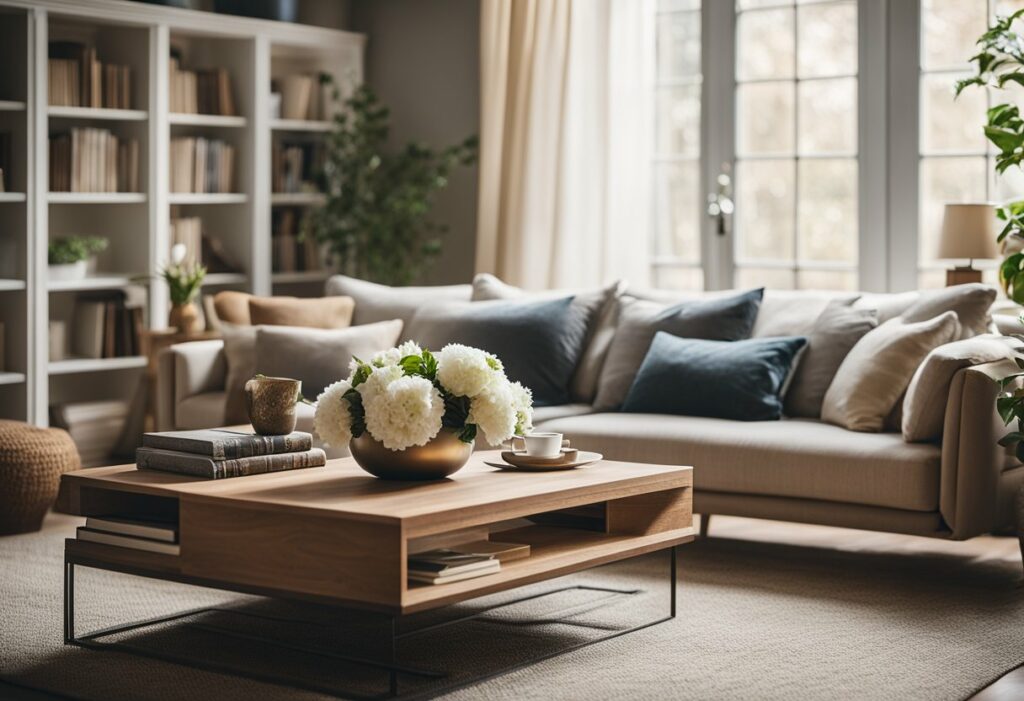Study Living Room Design Ideas: Transform Your Space with These Creative Tips
Designing a study living room can be an exciting project that allows you to create a space that is both functional and aesthetically pleasing. This unique concept combines the comfort and warmth of a living room with the practicality of a home office or study room. By integrating clever design elements and thoughtful furniture choices, you can transform your living room into a multifunctional area that inspires productivity and relaxation.
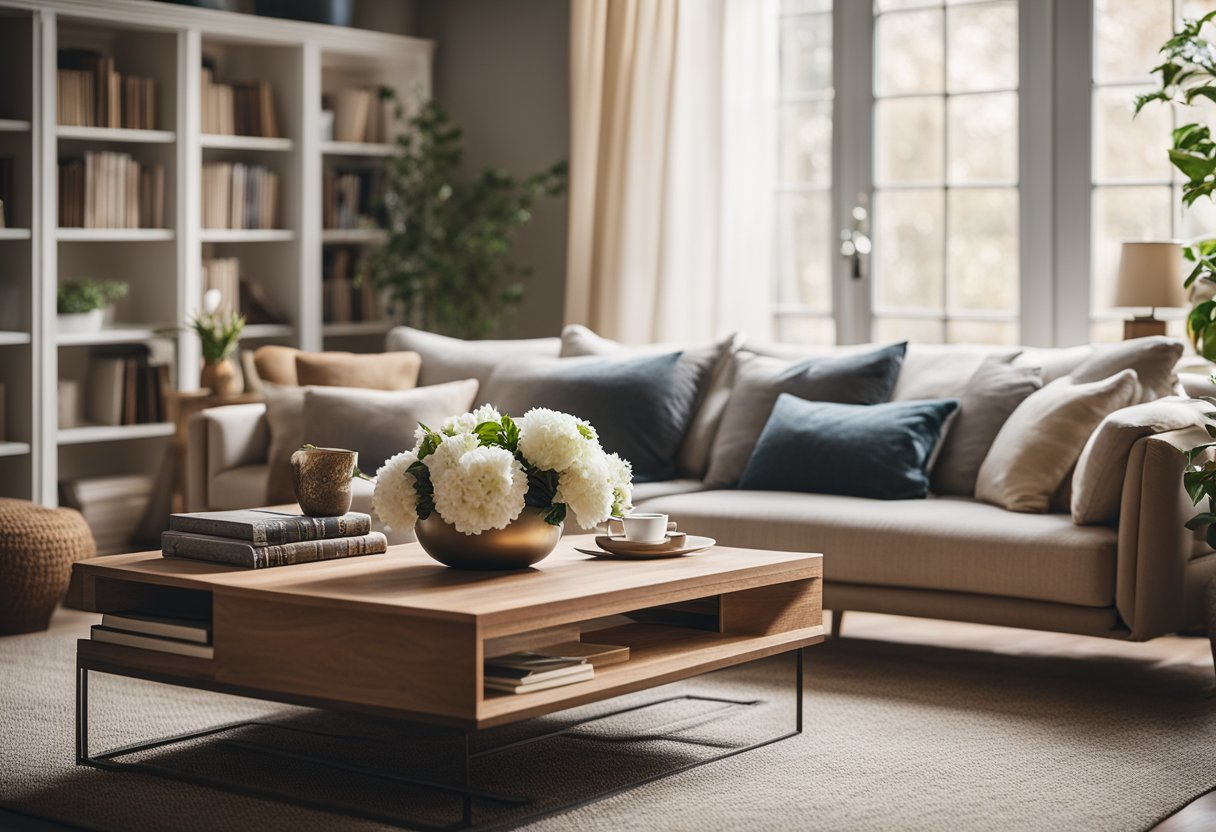
Maximising comfort and function is key when it comes to study living room design. Finding the right balance between creating a conducive workspace and a cosy environment for relaxation is essential. From selecting the perfect desk and chair to incorporating storage solutions and lighting, every detail contributes to the overall functionality and comfort of the space.
Key Takeaways
- Designing a study living room offers the opportunity to create a multifunctional space that combines productivity and relaxation.
- Maximising comfort and function is crucial when planning a study living room, ensuring a harmonious blend of work and leisure.
- Thoughtful furniture choices, lighting, and storage solutions contribute to the overall functionality and comfort of a study living room.
Designing Your Study Living Room
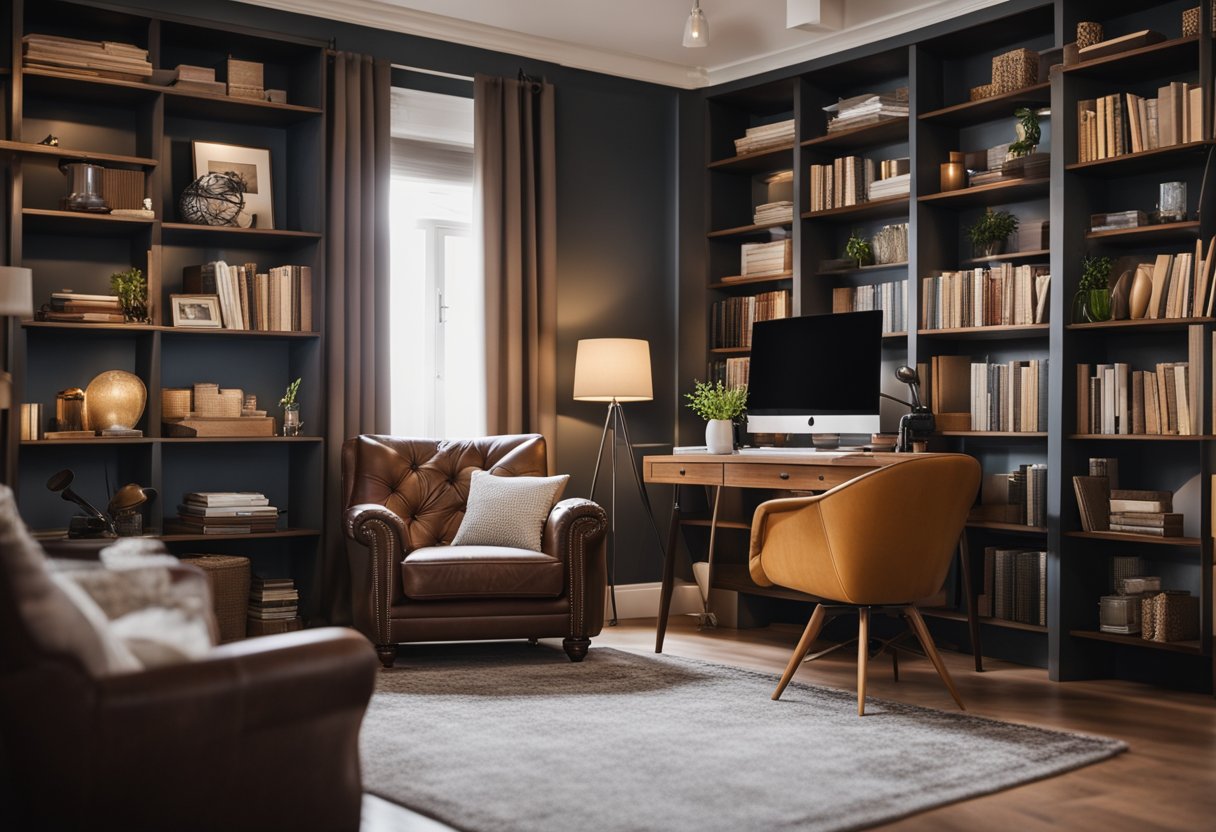
Designing a study living room can be an exciting but challenging task. You want to create a space that is both functional and aesthetically pleasing. Here are some tips to help you design the perfect study living room.
Selecting the Perfect Desk and Chair
When selecting a desk and chair, you want to make sure that they are both ergonomic and comfortable. An ergonomic desk and chair will help you maintain good posture and reduce the risk of back pain. Consider a desk chair with adjustable height and lumbar support.
Incorporating Effective Storage Solutions
Effective storage solutions are essential for a study living room. You want to make sure that you have enough storage space for all your books, papers, and office supplies. Consider incorporating shelves, drawers, cabinets, and bookshelves into your study living room design.
Choosing the Right Colours and Decor
The right colours and decor can make all the difference in a study living room. Bright and colourful decor can help to create a positive and inspiring environment. Consider adding artwork or a gallery wall to add a personal touch to your study living room design.
Overall, designing a study living room requires careful consideration of furniture, layout, focus, productivity, organization, dedicated space, desk, chair, ergonomic, desk chair, comfort, functionality, storage, shelves, drawers, cabinets, bookshelves, storage space, design, decor, paint, bright, colourful, artwork, and gallery wall. With these tips, you can create a study living room that is both functional and beautiful.
Maximising Comfort and Function
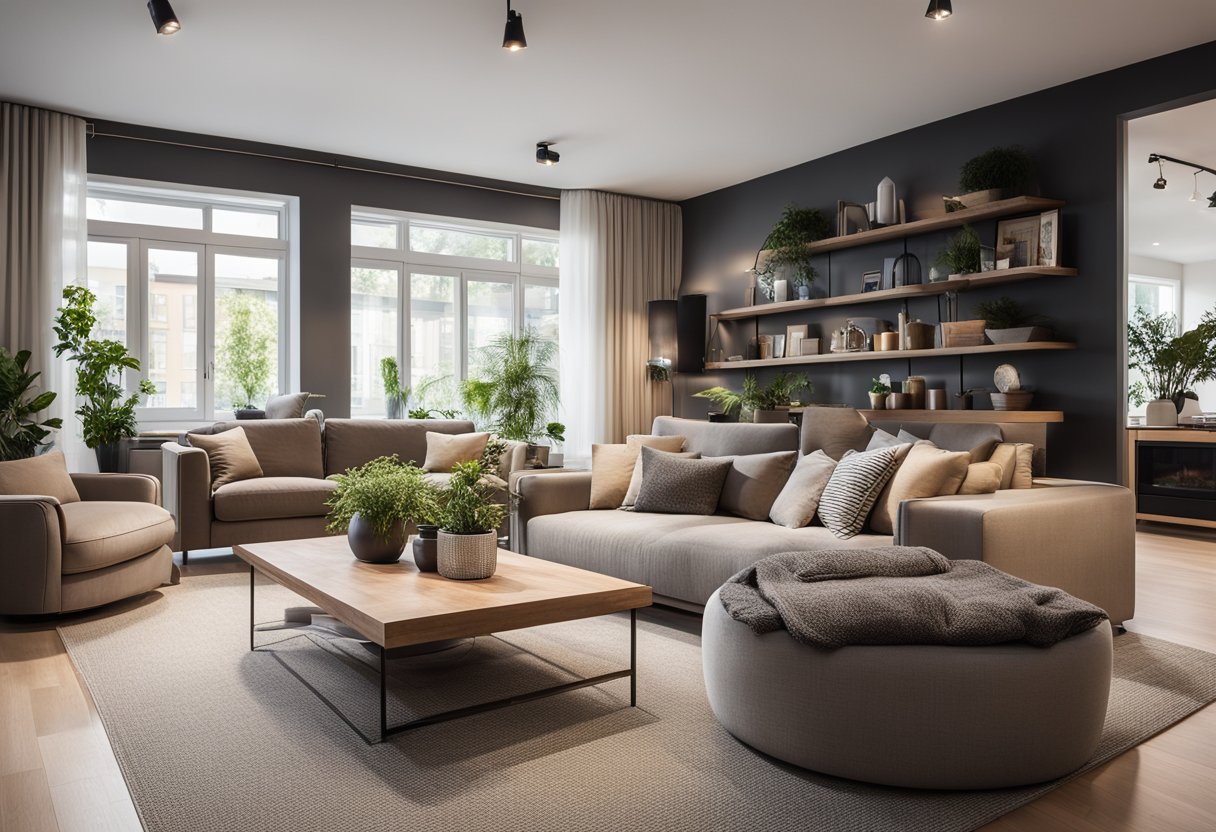
When designing your study area, it is essential to maximise both comfort and function. You want a workspace that is both inviting and practical. Here are some tips to help you achieve this balance.
Optimising Lighting and View
Lighting is a crucial factor in creating a comfortable and functional study area. Natural light is best for reducing eye strain, improving mood, and boosting productivity. If possible, position your workspace near a window to take advantage of natural light. You can also add a table lamp for extra lighting when needed.
The view from your study area can also impact your productivity and comfort. A pleasant view can help you relax and focus, while an unpleasant view can be distracting. If you have a choice, position your workspace to look out onto a pleasant view.
Creating a Distraction-Free Zone
To maximise your focus and productivity, create a distraction-free zone in your study area. This means eliminating any potential distractions, such as noise, clutter, and visual distractions. If possible, position your workspace away from high traffic areas in your home.
You can also add privacy screens or curtains to your study area to block out any visual distractions. Keep your workspace clean and organised, and avoid cluttering it with unnecessary items. This will help you stay focused and on-task.
Personalising Your Study Space
Your study area should be a reflection of your personality and style. Personalising your workspace can make it more comfortable and inviting. Consider adding plants, photos, or decor that inspire you and make you feel at ease.
You can also choose furniture that is both comfortable and functional. A comfortable chair and desk will help you stay focused and productive for longer periods. A cozy rug or throw can also add warmth and comfort to your study area.
By maximising comfort and function in your study area, you can create a workspace that is both practical and inviting. Use these tips to create a study area that is tailored to your needs and preferences.
Frequently Asked Questions
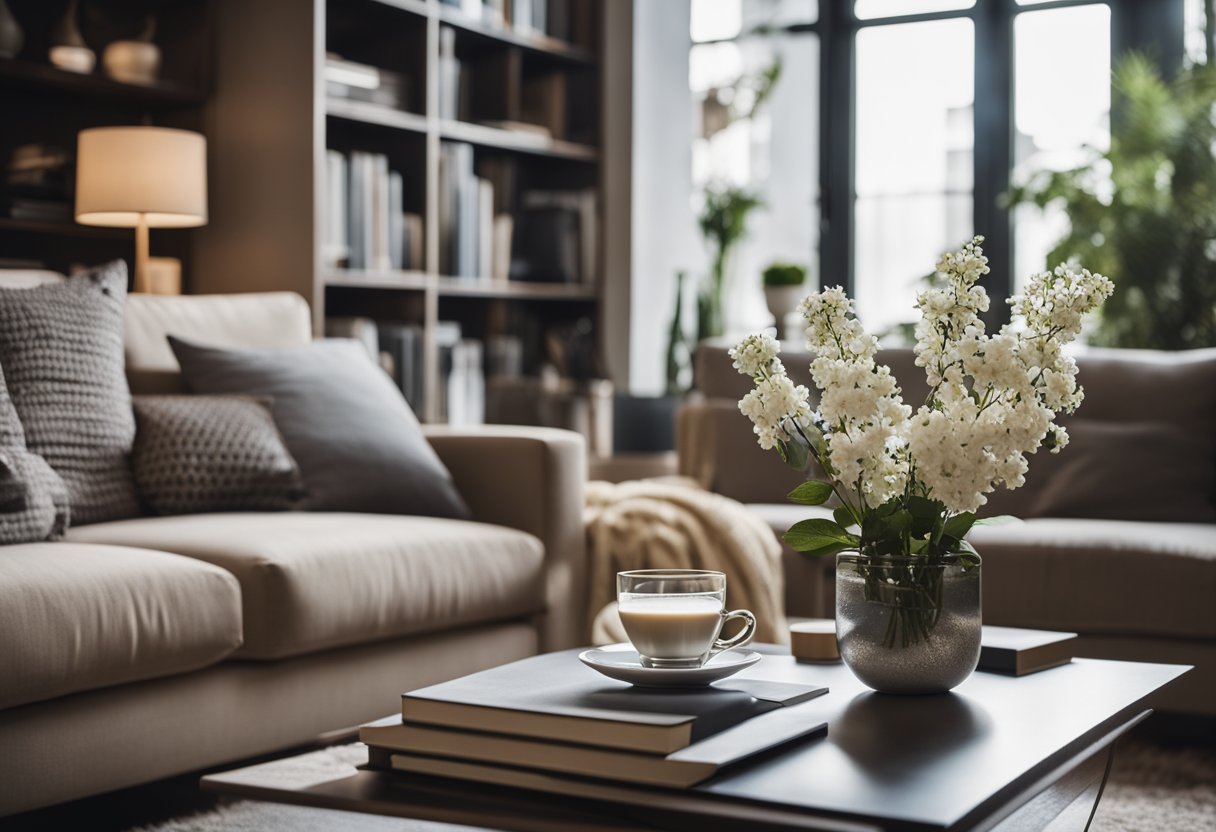
How can I maximise space in my compact study room?
When working with a small study room, it’s important to maximise the available space. One way to do this is to use multifunctional furniture such as a desk with built-in shelves or a storage ottoman that can double as a seat. You can also use vertical space by installing floating shelves or a bookcase that goes all the way up to the ceiling.
What are the top design tips for creating an inspiring study area for students?
To create an inspiring study area for students, it’s important to choose a colour scheme that promotes focus and concentration. Blue and green are great choices for this. You can also add motivational quotes or posters to the walls to keep students motivated. Make sure the study area is well-lit with a good task light and that the desk is large enough to accommodate all necessary study materials.
Where can I find inspiration for modern study living room interiors?
You can find inspiration for modern study living room interiors in a variety of places. Online interior design blogs, social media platforms like Pinterest and Instagram, and home decor magazines are all great sources of inspiration. You can also visit furniture stores or showrooms to see how different pieces of furniture and decor can be combined to create a modern study living room.
What are some budget-friendly ways to set up a study nook in a small living space?
Setting up a study nook in a small living space doesn’t have to be expensive. One budget-friendly way to do this is to repurpose a small corner of the living room or bedroom and add a small desk and chair. You can also use a folding table that can be stored away when not in use. Don’t forget to add some storage solutions like floating shelves or a bookcase to keep study materials organised.
What elements are essential for designing an adult-friendly study room?
When designing an adult-friendly study room, it’s important to choose a comfortable chair and desk that are ergonomically designed for long periods of sitting. Good lighting is also essential, as well as storage solutions to keep the area organised. You can also add personal touches like artwork or plants to make the space feel more inviting.
What’s the best way to undertake a study room makeover on a shoestring budget?
Undertaking a study room makeover on a shoestring budget is possible with a little creativity. Start by decluttering and organising the space, then add a fresh coat of paint to the walls. You can also repurpose furniture you already have, or find budget-friendly pieces at second-hand stores or online marketplaces. Don’t forget to add some personal touches like artwork or a rug to make the space feel more inviting.

